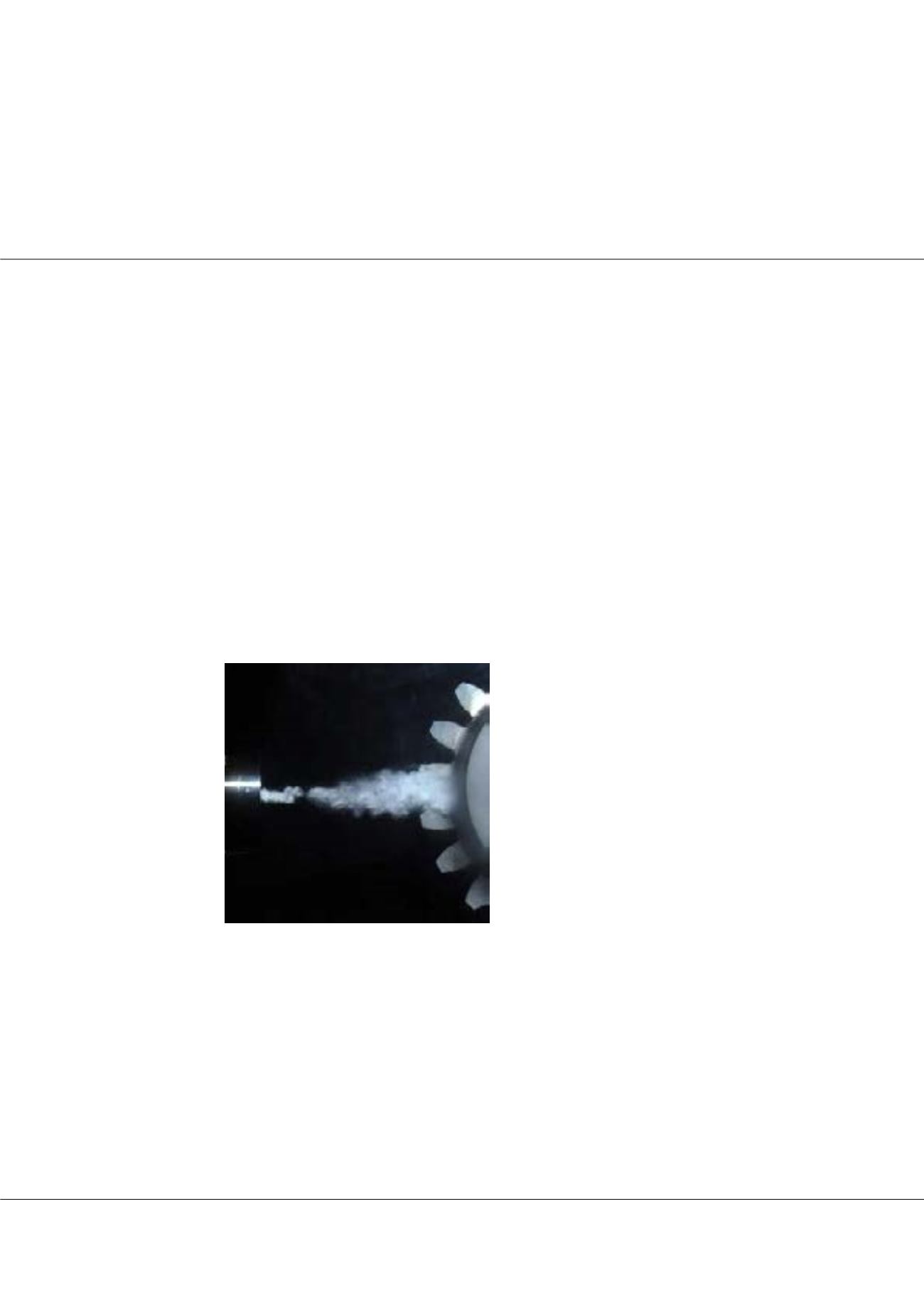

Page 58
Notes:
conferenceseries
.com
Volume 5, Issue 5
Res. Rev. J Mat. Sci. 2017
ISSN: 2321-6212
Advanced Materials 2017
September 07-08, 2017
September 07-08, 2017 | Edinburgh, Scotland
Advanced materials & Processing
11
th
International Conference on
Surface mechanics design of metallic materials by cavitation peening
Hitoshi Soyama
Tohoku University, Japan
C
avitation normally causes damage in hydraulic machineries such as pumps and screw propellers, as severe impacts are produced
at cavitation collapses. However, cavitation impacts can be utilized for surface mechanics design for improvement of fatigue
strength in the same way of shot peening. The peening method using cavitation impacts is named as “cavitation peening”. The
advantage of cavitation peening is that the increase of surface roughness is small comparing with conventional shot peening, as shots
are not required in cavitation peening. In order to mitigate stress corrosion cracking, introduction of compressive residual using
cavitation impact was proposed, and it has been applied for nuclear power plants. By enhancing cavitation impacts, improvement
of fatigue strength was demonstrated.The aspect of cavitation peening of gear by using a submerged water jet with cavitation, i.e.,
a cavitating jet. In order to investigate mechanism of improvement of fatigue strength, a special fatigue tester was developed to
investigate crack propagation in surface modified layer. Cavitation peening also suppress hydrogen embrittlement. At laser peening,
it is believed that impact caused by laser abrasion produces plastic deformation for surface treatment. However, a bubble is generated
after laser abrasion, and it produces impact at bubble collapse like cavitation, then it can be called as laser cavitation. As shown
in Fig. 2, when the impact passing through the material was measured, the impact induced by laser abrasion is larger than that of
laser abrasion. Namely, at submerged laser peening, peening effect would be improved by considering the laser cavitation. In the
presentation, the principal of cavitation peening is introduced with applications of cavitation peening such as improvement of fatigue
strength and suppression of hydrogen embrittlement. The work was partly supported by Osawa Scientific Studies Grants Foundation.
Biography
Hitoshi Soyama is Professor of Department of Finemechanics at Tohoku University, Japan, He is a Fellow of American Society of Mechanical Engineers ASME
and a honorary member of Water Jet Technology Society of Japan. He is known for his work in the fields of cavitation and its practical applications such as water
treatment and mechanical surface treatment, i.e., cavitation peening. Although cavitation impacts causes severe damage in hydraulic machineries, his research
utilized cavitation impacts for enhancement of fatigue properties of metallic materials. He established evaluation methods using inverse analysis to investigate
mechanical properties of surface modified layer. Now, he has been applied the evaluation methods to mechanical properties of products of additive manufacturing.
He proposed additive manufacturing of laser melting using oxide iron on Mars and/or Moon. It was revealed that oxygen was obtained during the process.
soyama@mm.mech.tohoku.ac.jpHitoshi Soyama, Res. Rev. J Mat. Sci. 2017, 5:5
DOI: 10.4172/2321-6212-C1-005
Figure2:
Laser abrasion and laser cavitation
at submerged laser peening by a cavitating jet
















